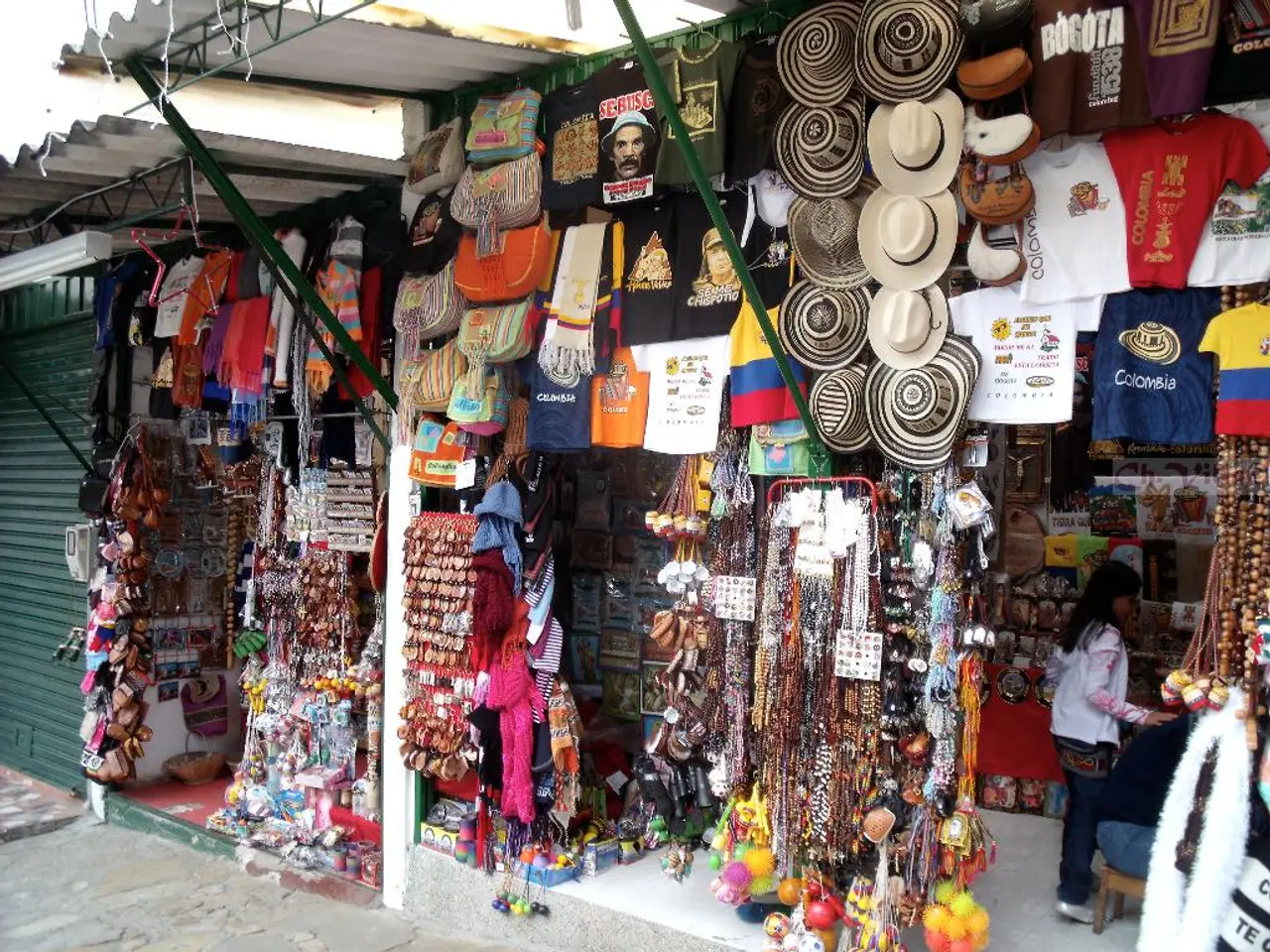Global Fashion: A Tapestry of Cultures and Traditions
Captivating Fashion Trends, Stylish Accessories, and Valuable Fashion Insights Gleaned from Over Two Decades of Global Travels
From the rugged Andes to the bustling streets of Southeast Asia, traditional clothing and accessories have long been a reflection of cultural identities, histories, and social statuses. These timeless pieces, often deeply rooted in local traditions, have found new life in the modern fashion landscape, blending cultural richness with contemporary style.
Take, for instance, the Qulla hat, or chullo, a hand-knitted, embroidered hat with distinctive ear flaps, worn by Indigenous communities in the Andes. Similarly, the Southeast Asian sarong, a versatile, wraparound garment, carries cultural significance across the region.
Ikat from Uzbekistan, crafted through a meticulous process, results in textiles rich with cultural meaning and artistry. Meanwhile, espadrilles, traditionally worn by peasants and farmers, have been embraced by fashion designers worldwide, balancing rustic heritage with chic, effortless style.
Ponchos from Peru, Bolivia, and Chile are deeply rooted in Indigenous traditions and are now worn as statements of pride. Ghanaian Kente cloth, a vibrant, handwoven textile rich in symbolism, tells a story with each colour and pattern.
The paisley pattern, originating in ancient Persia as a symbol of life and eternity, has travelled the globe, adorning Scottish shawls in the 18th century and becoming a global motif. Wooden clogs, valued for protection and sturdiness, have been reimagined as fashion statements, blending comfort and nostalgia.
The Sámi gákti, a traditional dress rich in beadwork and embroidery, represents the Indigenous identity of the Sámi people in Northern Europe. In Eastern dress, countries like China developed sophisticated textile traditions, such as silk production since the Shang dynasty, which have influenced modern Eastern and world fashion.
In the last 50 years, fashion trends have also reflected social and political movements. For example, the punk style of the 1970s emerged from marginalized communities as a form of rebellion and democratized fashion, emphasizing resistance and individuality through clothing.
However, the appropriation of traditional clothing and motifs has been a contentious issue. An example of this is the Kolhapuri chappals, handcrafted leather sandals known for their intricate braiding and durability, which faced backlash when Prada unveiled sandals resembling them without acknowledging their origins.
In contrast, cultural preservation and revitalization efforts are being made by artists and companies like Arundika Weerasekera and her company, Hues of Batik, who are reimagining batik and showcasing it to a new audience.
Overall, the cultural and historical origins of fashion are a complex tapestry involving royal privilege, cultural symbols, technological advances, social change, and globalization, with continuous interplay between tradition and innovation across societies worldwide. Whether worn for practicality, spiritual significance, or fashionable flair, these traditional garments and motifs continue to inspire and captivate, bridging the gap between past and present.
[1] "The History of Fashion: From the Royal Court to the Runway." BBC Culture, BBC, 14 Nov. 2017, www.bbc.com/culture/article/20171114-the-history-of-fashion-from-the-royal-court-to-the-runway.
[2] "Fast Fashion: The Ugly Truth." Greenpeace, Greenpeace International, 2017, www.greenpeace.org/international/en/campaigns/detox/fast-fashion/.
[3] "Traditional Clothing Around the World." National Geographic, National Geographic Society, 17 Jan. 2020, www.nationalgeographic.org/encyclopedia/traditional-clothing/.
[4] "Chinese Clothing: A Brief History." China Highlights, China Highlights, 19 Nov. 2019, www.chinahighlights.com/travelguide/chinese-clothing.htm.
[5] "The History of Punk." British Library, The British Library, www.bl.uk/treasures/the-history-of-punk/.
- The chullo, a traditional Andean hat, blends cultural heritage with modern style in the fashion landscape.
- Ikat textiles, rich with cultural meaning, find a home in both traditional and contemporary fashion.
- Once worn by peasants, espadrilles now embody contemporary style while honoring rustic heritage.
- Ponchos, deeply rooted in Indigenous traditions, are worn as statements of pride and fashionable flair.
- Kente cloth, a vibrant and symbolic Ghanaian textile, tells a story with every color and pattern.
- The paisley pattern, originally an ancient Persian symbol, adorns fashion garments and motifs worldwide.
- Whether worn for practicality, spiritual significance, or fashionable flair, traditional garments inspire and captivate, bridging the gap between past and present, just like the global fusion of fashions such as food-and-drink and travel, cultural-travel, and global-cuisines in today's lifestyle.





